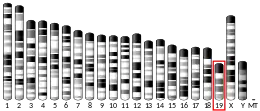| ALDH3B1 | |||||||||||||||||||||||||||||||||||||||||||||||||||
|---|---|---|---|---|---|---|---|---|---|---|---|---|---|---|---|---|---|---|---|---|---|---|---|---|---|---|---|---|---|---|---|---|---|---|---|---|---|---|---|---|---|---|---|---|---|---|---|---|---|---|---|
| Identifiers | |||||||||||||||||||||||||||||||||||||||||||||||||||
| Aliases | ALDH3B1, ALDH4, ALDH7, aldehyde dehydrogenase 3 family member B1 | ||||||||||||||||||||||||||||||||||||||||||||||||||
| External IDs | OMIM: 600466 MGI: 1914939 HomoloGene: 73890 GeneCards: ALDH3B1 | ||||||||||||||||||||||||||||||||||||||||||||||||||
| |||||||||||||||||||||||||||||||||||||||||||||||||||
| |||||||||||||||||||||||||||||||||||||||||||||||||||
| |||||||||||||||||||||||||||||||||||||||||||||||||||
| |||||||||||||||||||||||||||||||||||||||||||||||||||
| |||||||||||||||||||||||||||||||||||||||||||||||||||
| Wikidata | |||||||||||||||||||||||||||||||||||||||||||||||||||
| |||||||||||||||||||||||||||||||||||||||||||||||||||
Aldehyde dehydrogenase 3 family, member B1 also known as ALDH3B1 is an enzyme that in humans is encoded by the ALDH3B1 gene.[5][6]
Function
The aldehyde dehydrogenases are a family of isozymes that may play a major role in the detoxification of aldehydes generated by alcohol metabolism and lipid peroxidation. This particular gene spans about 20 kb of genomic DNA and is composed of 9 coding exons. The gene encodes a single transcript of 2.8 kb that is highly expressed in kidney and lung. The functional significance of this gene and the cellular localization of its product are presently unknown. Two transcript variants encoding different isoforms have been found for this gene.[7]
References
- 1 2 3 GRCh38: Ensembl release 89: ENSG00000006534 - Ensembl, May 2017
- 1 2 3 GRCm38: Ensembl release 89: ENSMUSG00000024885 - Ensembl, May 2017
- ↑ "Human PubMed Reference:". National Center for Biotechnology Information, U.S. National Library of Medicine.
- ↑ "Mouse PubMed Reference:". National Center for Biotechnology Information, U.S. National Library of Medicine.
- ↑ Hsu LC, Chang WC, Yoshida A (Dec 1994). "Cloning of a cDNA encoding human ALDH7, a new member of the aldehyde dehydrogenase family". Gene. 151 (1–2): 285–9. doi:10.1016/0378-1119(94)90672-6. PMID 7828891.
- ↑ Hsu LC, Chang WC, Yoshida A (Apr 1997). "Human aldehyde dehydrogenase genes, ALDH7 and ALDH8: genomic organization and gene structure comparison". Gene. 189 (1): 89–94. doi:10.1016/S0378-1119(96)00839-6. PMID 9161417.
- ↑ "Entrez Gene: ALDH3B1".
External links
- Human ALDH3B1 genome location and ALDH3B1 gene details page in the UCSC Genome Browser.
Further reading
- Sun X, Jia Y, Zhang X, Xu Q, Shen Y, Li Y (Jun 2005). "Multi-locus association study of schizophrenia susceptibility genes with a posterior probability method". Science in China Series C: Life Sciences. 48 (3): 263–9. doi:10.1007/bf03183620. PMID 16092759. S2CID 19136391.
- Hsu LC, Chang WC, Yoshida A (Dec 1994). "Cloning of a cDNA encoding human ALDH7, a new member of the aldehyde dehydrogenase family". Gene. 151 (1–2): 285–9. doi:10.1016/0378-1119(94)90672-6. PMID 7828891.
- Marchitti SA, Orlicky DJ, Vasiliou V (May 2007). "Expression and initial characterization of human ALDH3B1". Biochemical and Biophysical Research Communications. 356 (3): 792–8. doi:10.1016/j.bbrc.2007.03.046. PMC 1899873. PMID 17382292.
- Saito A, Kawamoto M, Kamatani N (Jun 2009). "Association study between single-nucleotide polymorphisms in 199 drug-related genes and commonly measured quantitative traits of 752 healthy Japanese subjects". Journal of Human Genetics. 54 (6): 317–23. doi:10.1038/jhg.2009.31. PMID 19343046.
- Wang Y, Hu Y, Fang Y, Zhang K, Yang H, Ma J, Xu Q, Shen Y (Jun 2009). "Evidence of epistasis between the catechol-O-methyltransferase and aldehyde dehydrogenase 3B1 genes in paranoid schizophrenia". Biological Psychiatry. 65 (12): 1048–54. doi:10.1016/j.biopsych.2008.11.027. PMID 19159868. S2CID 25166866.
- Yoshida A, Rzhetsky A, Hsu LC, Chang C (Feb 1998). "Human aldehyde dehydrogenase gene family". European Journal of Biochemistry. 251 (3): 549–57. doi:10.1046/j.1432-1327.1998.2510549.x. PMID 9490025.
This article incorporates text from the United States National Library of Medicine, which is in the public domain.



